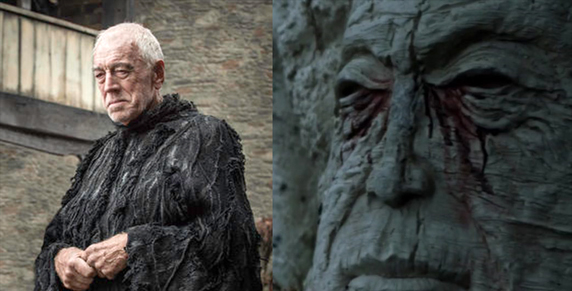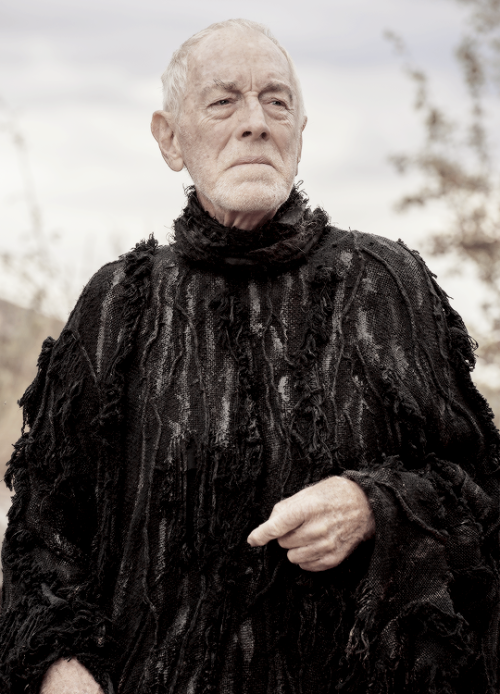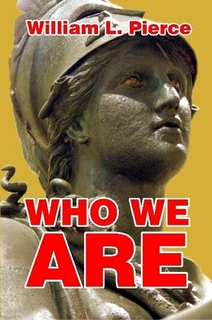Or:
Ethnosuicidal Spencer
The future 3-Eyed Raven
beside the Heart tree at Winterfell.
Generally white nationalists see me as a very rare fellow since, without being Aryan, I proclaim nordicism. They ignore that it is precisely because my ancestors lost their Aryan blood what motivates me to warn others not to lose it.
I’m not the weird one in promoting nordicism. They are the freaks. A reading of William Pierce’s book immediately uncovers the fact that over the millennia whites tried to preserve their race through a religion (as in India) or through a harsh political system based on iron laws (as in Sparta) or putting public notices so that the blacks did not pass from a certain geographic latitude (as in Egypt) or burning alive the Aryan that married a mudblood (as did the Visigoths in Spain before Christianity deceived them).
What is more, what is labelled ‘nordicism’ is, in fact, orthodoxy in racial studies from Gobineau and Chamberlain to Grant and Günther and the National Socialists. The latter, for example, took nordicism for granted to the extent that they prevented the Germans from marrying those Slavs whose bloodline was compromised (Richard Spencer did exactly the opposite in his personal life). Even today’s scholars share the nordicist premise (see, for example, Kevin MacDonald’s review of the book Raciology by Vladimir Avdeyev here or here).
Only in recent times, when in the mid-1990s the term white nationalism started to be used, its supporters wanted to make tabula rasa of the knowledge accumulated in the last centuries and tried to reinvent the wheel starting from scratch. Many of these people are so ignorant that they do not even want to read books: they just watch the news of what is happening in the world from the point of view of racist internet sites. Something as elementary as ordering Pierce’s book from Amazon Books and studying it is foreign to them in their superficial way of acting in the world.
Moreover, even the most educated white nationalists suffer from this problem. Like pedantic university students these nationalists quote charlatan Aleksandr Dugin, but at the same time they are incapable of recognizing elemental patterns in the history of the white race.
Yesterday evening, for example, I discovered an interview with Richard Spencer with a mongrel in which Spencer asserted that the ethnic state of his dreams could absorb mulattos and mestizos, as long as they believed in the Western cause!
Presumably Spencer would admit these mongrels, mestizos and mudbloods as ordinary citizens, who would have the right to marry whites. ‘Race is a big family’ Spencer said, in the sense that he is not ‘Puritan’ to the extent of rejecting black and Amerindian blood within the gene pool of the white state. Spencer added that the numbers of mongrels are very small although earlier in the interview the interviewer had released the data that interracial couples consist of 10 percent of the population.
In Who We Are Pierce wrote:
Before we deal with the next Indo-European peoples of the Classical Age—the Macedonians and the Romans—let us review briefly the history of our race to this point, and let us also look at the fate of some Indo-Europeans who, unlike those we have already studied, invaded Asia instead of Europe.
Pierce then explains how the ‘Indo-Europeans’, that is the Nordish peoples, conquered the Middle East but perished through racemixing precisely because they held the view that Spencer now holds. According to Pierce it happened to the Hittite Empire, the Persian Empire and in India. Unlike what Spencer and most white nationalists believe, ‘only total separation can preserve racial quality’.
My prediction is not only that white nationalists will continue with their ethnosuicidal ideology. They will continue to ignore the classics of racial studies whose names I cited above, even the American Madison Grant. In their pride they will continue to see themselves as superior to the nationalist socialists of the last century, when their inferiority is obvious.









